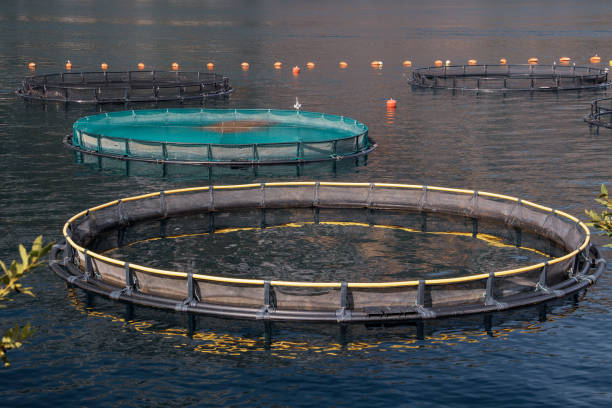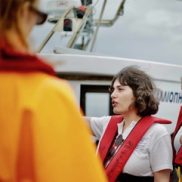Restorative Aquaculture: Principles for Sustainable Marine Ecosystems
As the global demand for food continues to rise, aquaculture plays a significant role in shaping the future of protein production. The sector’s expansion has brought different approaches to mitigate ecological impacts associated with production systems. Meanwhile, as marine and freshwater ecosystems around the world are degraded, overexploited, and heavily polluted, there is an increasing focus on leveraging aquaculture for conservational purposes such as species rehabilitation or habitat restoration (FAO, 2022; Mizuta et al., 2022).
What is restorative aquaculture?
Restorative aquaculture can be defined as “Commercial or subsistence aquaculture that provides ecological benefits to the environment, leading to improved environmental sustainability and ecosystem services, alongside the supply of seafood or other commercial products and opportunities for livelihood” (Alleway et al., 2023).
What are the principles of restorative aquaculture?
According to the Nature Conservancy, restorative aquaculture should follow specific principles. These principles can be adopted both in small and large-scale establishments, including freshwater (inland) and marine (coastal and offshore) sites, with no limitations regarding their location:
- Farms should be located in areas that require environmental improvement
- The reared species should provide the environmental outcomes intended
- The farming equipment used should enhance the delivery of environmental benefits
- The management practices adopted should align with or enhance local ecological processes
- The intensity and scale of culture aim to enhance the ecosystem
- The socioeconomic value of the environmental benefits provided should be defined
Some of the species used in restorative aquaculture include seaweeds, bivalves, or even corals. Below, we present some real-life cases of restorative aquaculture that have been applied worldwide to understand the concept better.
Restorative aquaculture can be a practical solution for a more sustainable marine ecosystem
An exciting pilot trial occurred in Procida, Italy, where the purple sea urchin (Paracentrotus lividus) was cultured and restored. The purple sea urchin can be found in the Mediterranean Sea and the northeastern Atlantic, and its roe is considered a delicacy. Nonetheless, the growing demand for roe has led to the decrease of urchin natural stocks. Thus, restorative aquaculture of P. lividus has gained popularity for commercial and ecological reasons (Gharbi et al., 2023).
Restorative activities are also taking place in the Black Sea, where the Black Sea turbot (Scophthalmus maximus) is considered an important species, playing a vital role in the fisheries sector of the Black Sea countries since ancient times. The significant decrease in the annual catch of turbot in 1986 due to overfishing resulted in a fishing ban that lasted six years (1986-1992) to restock the species naturally. However, the lack of effective control in the following years resulted in a substantial increase in illegal, unreported, and unregulated turbot fishing (Baiandina et al., 2022). The importance of the species for the local communities and the private sector, along with the overfishing issues, led to the growth of restorative aquaculture as a sustainable solution (Massa et al., 2021). For instance, the Central Fisheries Research Institute in Trabzon, Turkey, uses land-based aquaculture systems to produce Black Sea turbot juveniles, which are then released to support the natural stocks within the context of restocking projects (FAO, 2023).
Although oysters have been a food source for years, it is estimated that approximately 85% of the world’s oyster reefs have vanished due to overfishing and disease outbreaks. The problem is even bigger than just the loss of coral reefs (Smith et al., 2023; Wasson et al., 2020). The European flat oyster Ostrea edulis, a species known for its culinary, medicinal, and ecological value, has been severely depleted in the 20th century. Aquaculture is vital in providing a sustainable supply of seed oysters for commercial purposes and ecological restoration. Even though most European flat oyster seeds come from wild collections (oceans-natural environment), this supply is insufficient for its requirements of ecological restoration. Aquaculture research has identified several areas that require further investigation to improve oyster seed production and could contribute to the expansion of the production by establishing land-based hatcheries and controlled environments, providing a reliable and sustainable supply of seed oysters (Colsoul et al., 2021). Recently, organizations operating in the United Kingdom and the European Union have been trying to establish actions related to restoring native oyster ecosystems. More specifically, the European Native Oyster Restoration Alliance, since 2017, has been trying to address topics related to oyster restoration practices like biosecurity, location, and production issues.
In summary, although aquaculture is essential in global food sufficiency, its rapid expansion has raised concerns about ecological impacts. In response, restorative aquaculture has gained attention, aiming to supply seafood and provide ecological benefits regarding species conservation. Several examples highlight this potential, and as this approach continues to evolve, ongoing research and collaborative efforts are essential to optimize practices, ensuring a balance between the environment and production.
Literature
Alleway, H. K., Waters, T. J., Brummett, R., Cai, J., Cao, L., Cayten, M. R., Costa-Pierce, B. A., Dong, Y. W., Brandstrup Hansen, S. C., Liu, S., Liu, Q., Shelley, C., Theuerkauf, S. J., Tucker, L., Wang, Y., & Jones, R. C. (2023). Global principles for restorative aquaculture to foster aquaculture practices that benefit the environment. Conservation Science and Practice, 5(8). https://doi.org/10.1111/csp2.12982
Baiandina, I., Giragosov, V., & Khanaychenko, A. (2022). Male reproductive potential in the Black Sea turbot (Scophthalmus maximus) spawning populations. Fisheries Research, p. 253. https://doi.org/10.1016/j.fishres.2022.106367
Colsoul, B., Boudry, P., Pérez-Parallé, M. L., Bratoš Cetinić, A., Hugh-Jones, T., Arzul, I., Mérou, N., Wegner, K. M., Peter, C., Merk, V., & Pogoda, B. (2021). Sustainable large-scale production of European flat oyster (Ostrea edulis) seed for ecological restoration and aquaculture: a review. In Reviews in Aquaculture (Vol. 13, Issue 3, pp. 1423–1468). John Wiley and Sons Inc. https://doi.org/10.1111/raq.12529
FAO. (2022). Restoration of productive aquatic ecosystems by small-scale fisheries and aquaculture communities in Asia Good practices, innovations, and success stories.
FAO. (2023). Black Sea turbot. In Black Sea turbot. FAO. https://doi.org/10.4060/cc6224en
Gharbi, M., Glaviano, F., Federico, S., Pinto, B., Cosmo, A. Di, Costantini, M., & Zupo, V. (2023). Scale-Up of an Aquaculture Plant for Reproduction and Conservation of the Sea Urchin Paracentrotus lividus: Development of Post-Larval Feeds. Journal of Marine Science and Engineering, 11(1). https://doi.org/10.3390/jmse11010154
Massa, F., Aydin, I., Fezzardi, D., Akbulut, B., Atanasoff, A., Beken, A. T., Bekh, V., Buhlak, Y., Burlachenko, I., Can, E., Carboni, S., Caruso, F., Dağtekin, M., Demianenko, K., Deniz, H., Fidan, D., Fourdain, L., Frederiksen, M., Guchmanidze, A., … Yücel-Gier, G. (2021). Black sea aquaculture: Legacy, challenges & future opportunities. Aquaculture Studies, 21(4), 181–220. https://doi.org/10.4194/2618-6381-V21_4_05
Mizuta, D. D., Froehlich, E. H., & Wilson, R. J. (2022). The changing role and definitions of aquaculture for environmental purposes. Reviews in Aquaculture.
Smith, R. S., Cheng, S. L., & Castorani, M. C. N. (2023). Meta-analysis of ecosystem services associated with oyster restoration. In Conservation Biology (Vol. 37, Issue 1). John Wiley and Sons Inc. https://doi.org/10.1111/cobi.13966
Wasson, K., Gossard, D. J., Gardner, L., Hain, P. R., Zabin, C. J., Fork, S., Ridlon, A. D., Bible, J. M., Deck, A. K., & Hughes, B. B. (2020). A scientific framework for conservation aquaculture: A case study of oyster restoration in central California. Biological Conservation, p. 250. https://doi.org/10.1016/j.biocon.2020.108745










































































